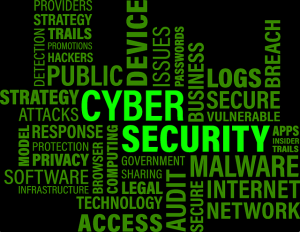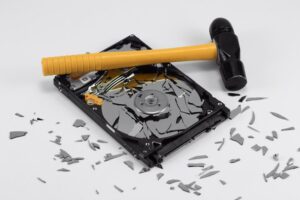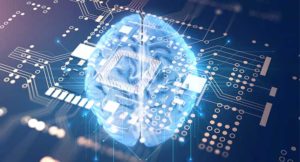Five features needed for IOT Data Processing

The IoT is primarily concerned with the data collected from connected sensors. IoT devices are objects with IP addresses that can collect and transfer data over the Internet, and generate a large amount of data at a high rate.
Moreover, data production is increasing with industry growth. Therefore, efficient data processing is essential.
Introduction
A few years ago, IoT was relatively new. The devices were for household use, and there was little data to process.
IoT is mainly related to the data collected from the sensors connected to objects. Data is generated at a tremendous rate by these objects called devices. It is necessary to have the right features and technologies to process this data.
This piece describes five features needed for IoT data processing. The idea is to make it easier to use and secure with features like secure data transfer protocol, authentication, and encryption.
What is the IoT?
IoT is a way of connecting physical objects to other devices over the Internet.
Any object with an Internet Protocol (IP) address, which can collect and transfer data over a network, is considered a ‘thing’ in IoT. It could be an implant in humans, any vehicle with built-in sensors, or any natural or artificial object.
IoT is used by a variety of industries to improve business value, boost customer satisfaction, and improve decision-making.
It evolved from M2M communication and links machines to networks without human interaction. IoT enables devices and technologies to collect, transmit and measure data in real-time.
How does IoT Data Processing Work?
There are four main components of an IoT system: sensors/devices, connectivity, data processing, and a user interface. Here’s an in-depth look at each of the components:
Sensors/Devices
We used the term ‘sensors/devices’ because more than one sensor can be bundled together. In addition, a sensor can be a part of a device that also performs some other function. A phone, for example, has many sensors (camera, GPS, etc), and is a device.
Regardless of whether it is a standalone sensor or a full device, the first step is collecting data.
Connectivity
The next step is to upload the data to the cloud. There are many ways for sensors/devices to connect to the cloud, including via satellite, WiFi, Bluetooth, or a direct connection to the internet.
Data Processing
A software platform analyzes the data once it has been uploaded to the cloud to take the appropriate action. This process is arguably one of the most challenging ones.
User Interface
Then, the end-user receives some benefit from the information. You can notify the end-user of this via email, text, etc.
Yet, this isn’t always the case. IoT applications allow users to perform some actions that can affect the system. Alternatively, the system could perform an action automatically based on predefined rules instead of waiting for you to take action.
What are the requirements for IoT data Processing?
Data collected from all the connected devices can be analyzed and visualized using IoT. But, it has to be processed to be understandable to users. We can turn IoT data into useful information through data processing.
The process of collecting data from so many devices is challenging, and requires a proper system to process data from IoT devices.
Following are some requirements that need to be met to efficiently process IoT data:
Reliable Connectivity
When it comes to IoT, connectivity is a crucial element. It is impossible to execute business use cases without seamless communication between the interrelated IoT ecosystem components, such as sensors, compute engines, data hubs, etc. Real-time big data analysis is fast, easy, and readily available with BangDB.
It is possible to connect IoT devices using radio waves, Bluetooth, WiFi, etc. We can use a wide range of internet-based protocols and connectivity layers to maximize efficiency and establish connectivity across IoT ecosystems and industries.
Scalability
As the IoT generates massive amounts of data, organizations must enhance their capabilities to handle rapid and seamless data volume. Existing infrastructure needs to be able to scale without difficulty, to grow globally.
As IoT data creation and innovation speed increase, it becomes harder to afford cost-based and storage-based scenarios. It is essential to re-imagine the data lifecycle beyond the limitations of infrastructure.
It is crucial to determine data access levels (which users will have access to the data), data retention requirements (how long the data needs to be stored), and legal concerns related to the data.
In addition to forward-thinking, the existing infrastructure should have the capability to handle the data processing in the future. A great example for this would be the infrastructure of BangDB, which is automated, repeatable, scalable and has prediction servers.
Safety
The IoT ecosystem places a high priority on security. Connectivity components connect endpoints and the analytics layer to pass sensitive information as part of the entire IoT ecosystem. To prevent data from being misused and manipulated, it is essential to follow safety and security procedures when developing an IoT system.
Security is a priority for BangDB. They strictly adhere to GDPR (General Data Protection Regulations) guidelines, ensuring the required level of privacy.
Integration
The core of any IoT data management solution is integrating data sources and services. The process includes processing operational data in real-time, connecting components and devices among IoT systems, and ensuring data security to allow organizations to connect, harvest, share, and manage their data across a wide range of IoT devices.
Through a cloud-based IoT analytics studio, it’s possible to effectively address issues such as scalability, data gravity, and integration. Using a built-in IoT infrastructure environment, you can connect, manage and scale IoT devices.
To scan data, the BangDB system uses primary and secondary indexes. In addition to millions of DB files on a single machine, there are thousands of tables and indexes.
Frequent data Updates
The number of devices connected to the Internet is rising daily, resulting in the rapid growth of IoT. There is a substantial increase in data generated by the IoT. To gain valuable insights from data that is updated frequently, real-time processing of the data is essential.
Besides the agents, the BangDB platform has collectors that can handle data from a wide variety of sources and contexts.
BangDB: a non-traditional solution for IoT data Processing
Due to the huge amount of data generated by IoT, it has the challenge of handling and processing data.
Devices connected to the Internet are used in many sectors, such as healthcare, transportation, and manufacturing. The goal of IoT is to collect data from these devices and use it for analytical and business-related purposes.
Nevertheless, these devices generate around 2.5 quintillion bytes of data per day, which can be hard to manage using traditional methods like processing the data manually.
With BangDB, real-time analysis of big data is quick, easy, affordable, and readily available. In addition to the platform’s agents, it has collectors that can handle different sources and contexts of data.
BangDB is a real-time processing analytics platform natively integrated with DB. The system scans data by using primary and secondary indexes. A single machine contains thousands of tables and indexes, along with millions of DB files.
Conclusion
IoT data is growing exponentially, so the need for a scalable and secure platform to collect, store, and analyze this data is imperative.
With more devices connected to the IoT, the system has advanced over the last few years. As a result, these devices collect an increasingly large amount of data, which requires cost-effective processing. The processing of large amounts of data requires a new approach.
With BangDB, data is stored in binary format, communications occur over a secure layer, and data can be masked or obscured from potential threats. BangDB adheres to industry standards for security. In addition, GDPR (General Data Protection Regulations) guidelines are followed, ensuring privacy as required.
To be successful in the IoT space, any company providing IoT Data Processing must have the above features.






